Restaurant Quality Roasted Tomato Sauce For Pasta, Pizza And More
Views: 158
If you are looking for a homemade tomato sauce recipe so you can stop buying cheap canned tomato sauce at your local grocery store, this recipe is not for you. But if you’re searching for a homemade roasted tomato sauce recipe to rival your favorite Italian spot, you’re in luck. Sure, our tomato sauce takes time to prepare, about 3+ hours, but the payoff is worth it. Follow the recipe closely, and you’ll be the envy of every Italian restaurant in town. Better yet, scale it up, can it, just like our recipe describes, and keep it handy in your pantry whenever you crave pizza, pasta, lasagna, or meatballs!
Yield:
The specified in this jam recipe quantity of ingredients should yield enough of jam to fill two 16 oz. (500 ml.) mason jars.

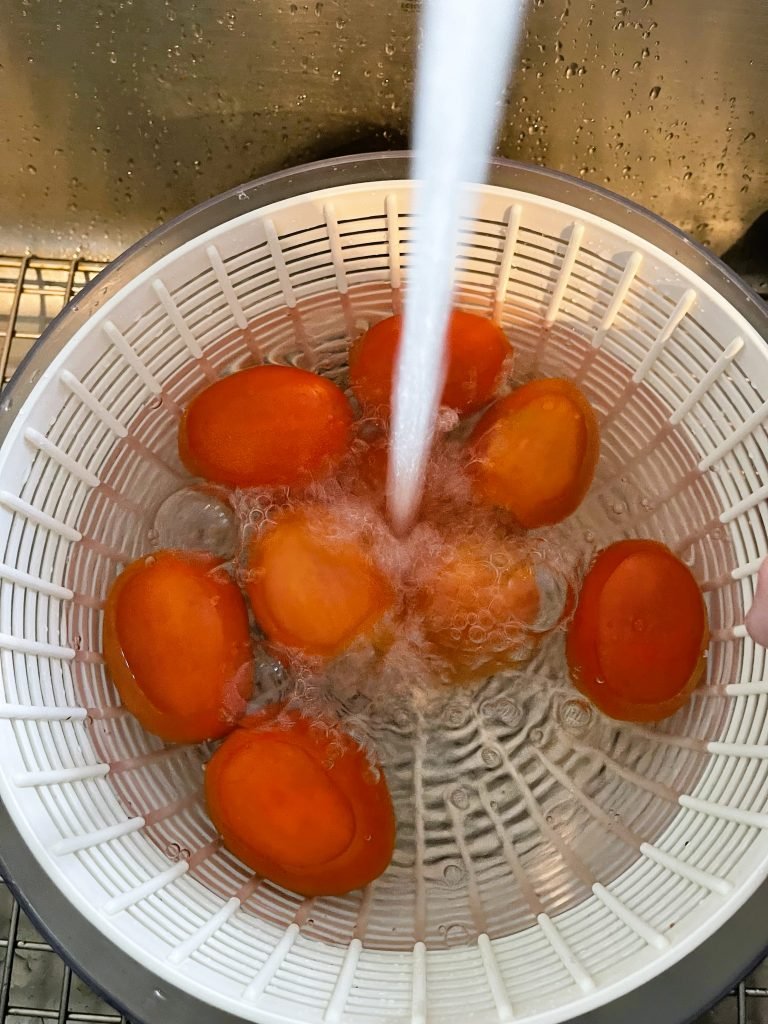
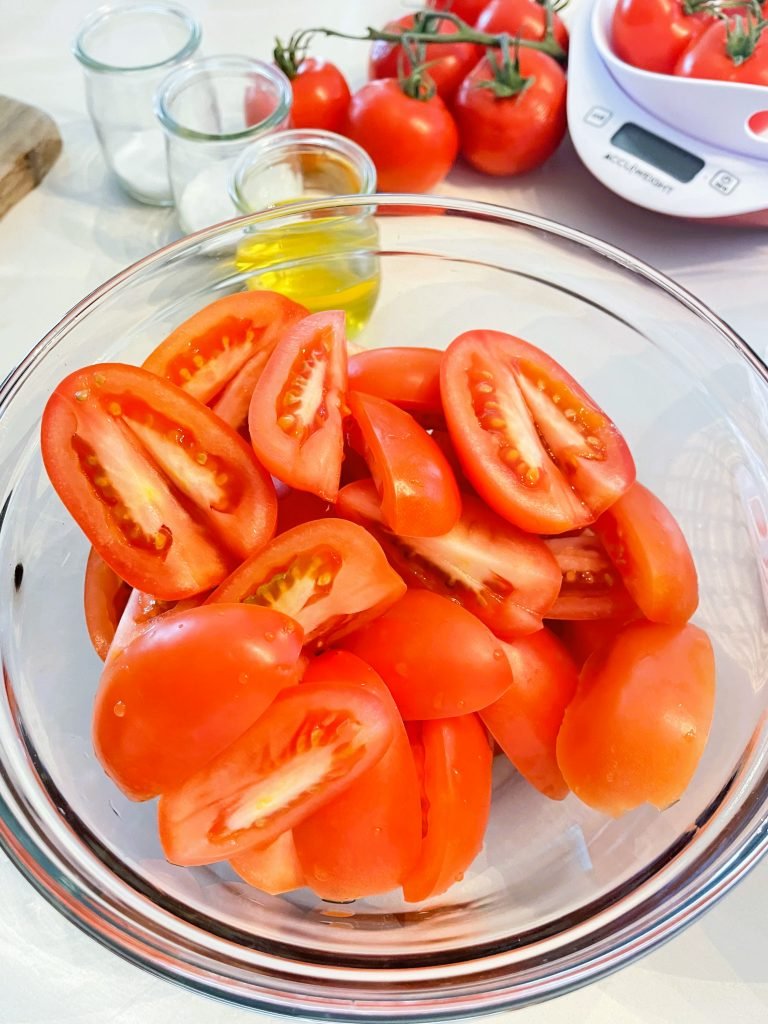

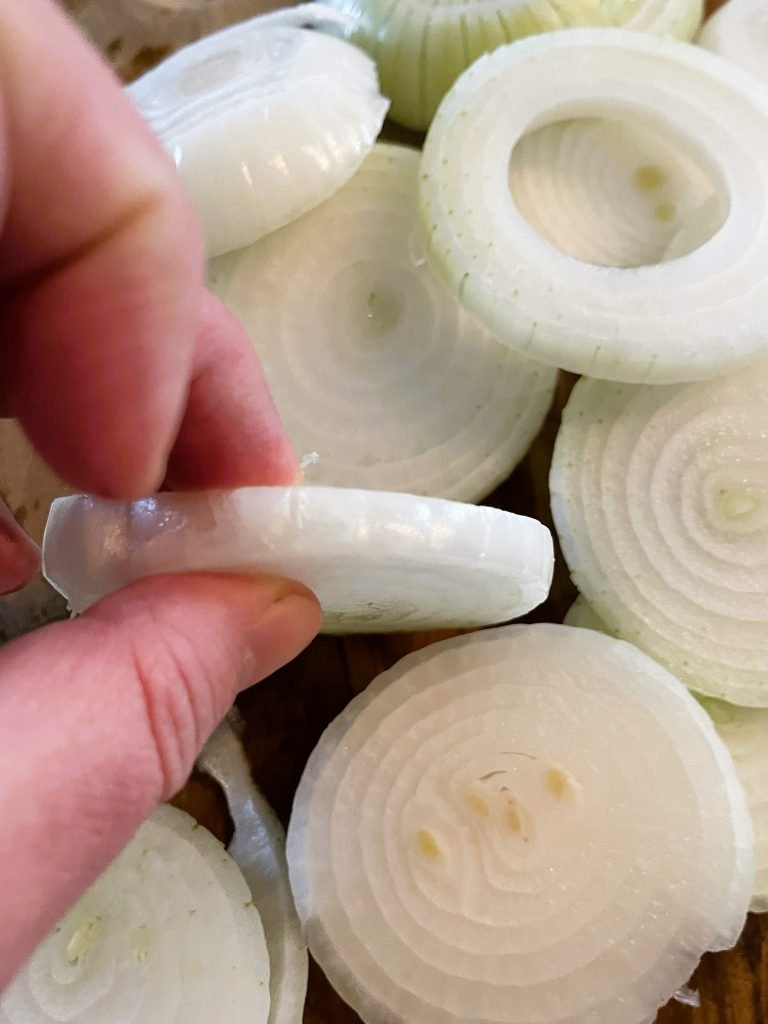
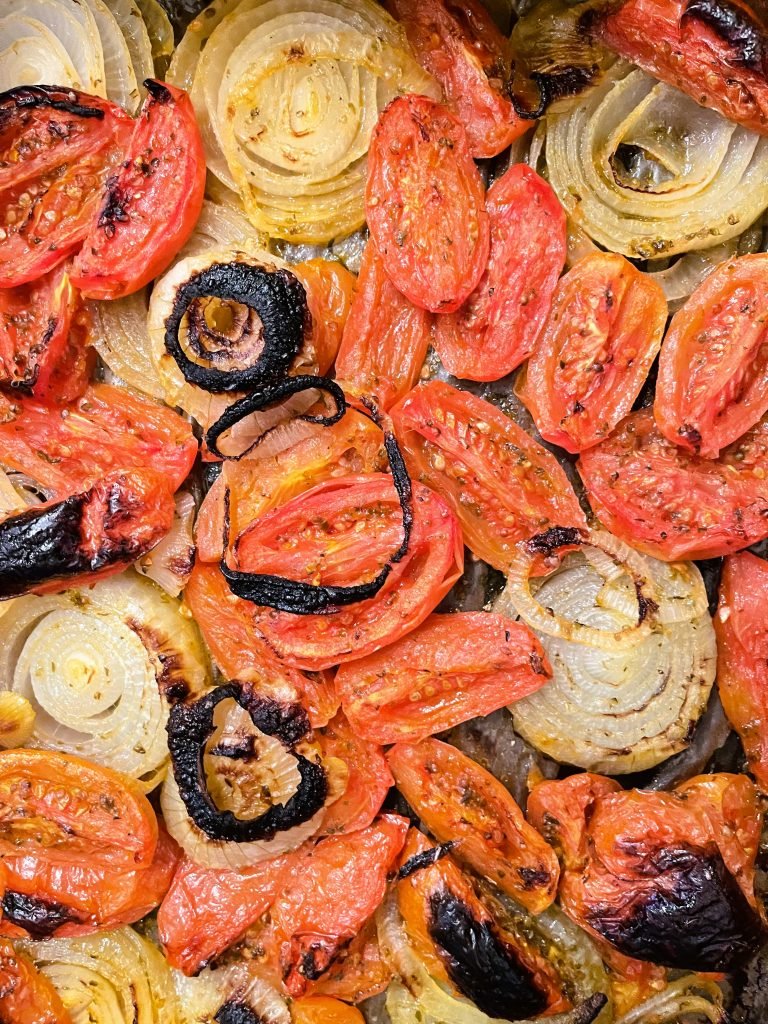









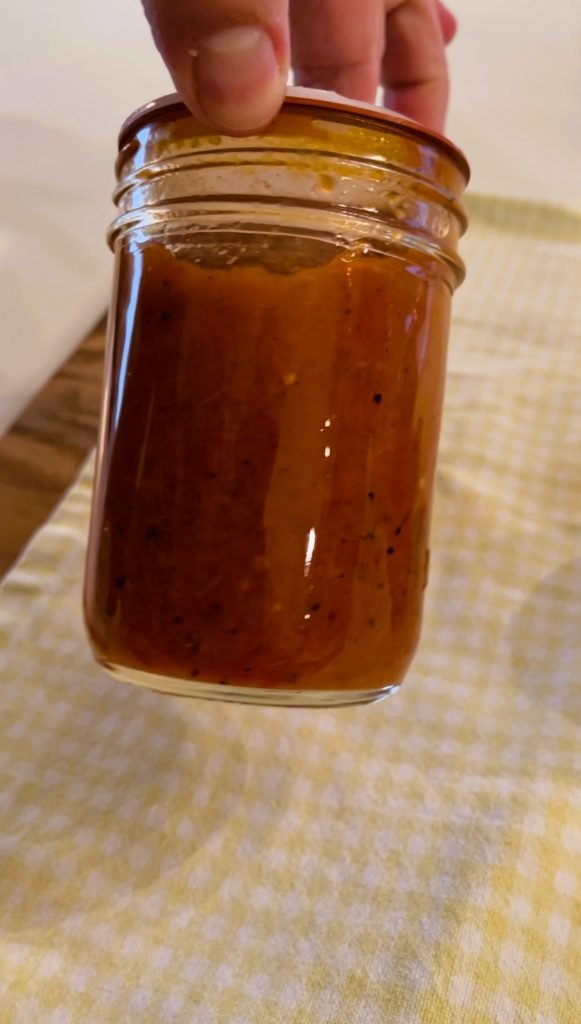
Roasted Tomato Sauce
Ingredients
- 2 lb. Roma tomatoes (900 g)
- 2.5 lb. Sweet juicy tomato variety, such as Campari or Cherry ( 1,133 g)
- 1 lb. onions (450 g)
- 5 cups water (650 ml)
- 3 tbsp. olive oil
- 6 cloves garlic
- 2 tbsp. salt
- 2 tsp. sugar
- 1 tbsp. oregano dry
- ½ small lemon juiced
Instructions
Roast Roma tomatoes and onions:
- Preheat the oven to 450° F first
- Wash and core Roma tomatoes.
- Cut the cored Roma tomatoes into quarters or halves.
- Wash and remove skin from the onions
- Slice onions into ½ inch thick rounds
- In a large bowl, mix the halved or quartered Roma tomatoes and sliced onions with 2 tbsp. of olive oil, and all of the salt and sugar until coated.
- Spread the tomatoes and onions onto a parchment-lined roasting pan.
- Roast in the preheated oven until the tomatoes blister and collapse, and the onions char slightly, approximately 40 minutes. Make sure to check after about 25 minutes as some ovens tend to burn food faster than others. If the onions are charred but the tomatoes did not start to blister, turn the onions over and continue roasting.
- Once done remove the roasting pan from the oven and let it cool till it is safe to touch.
Prepare sweet tomatoes:
- Wash and core Campari tomatoes.
- Cut them in halves or quarters and crush them in a blender.
Cook roasted tomato sauce:
- Transfer the roasted tomatoes and onions along with their juices to a food processor or blender. Add half of the measured-out water and blend until smooth. Set aside in a non-reactive bowl.
- Peel, wash and finely chop garlic.
- Use the pot large enough to hold all of the ingredients. Add all of the remaining oil to the pot and warm it up over medium-low heat for a minute or so. Then, add chopped garlic. Sauté till translucent, about 2 minutes.
- Add the crushed Campari tomatoes followed by the tomato-onion mixture to the pot. Stir well.
- Add the remaining water and freshly squeezed lemon juice to the mixture. Bring it to a boil. Remove foam-like impurities from the surface of the sauce.
- Once boiling, reduce the heat to low and simmer the tomato sauce for 1 ½ hours. Stir it regularly and try to reach to the bottom of the pot when you stir.
- After 1 ½ hours the roasted tomato sauce should reduce by about ½. At this point, it’s ready to be used immediately. However, as this is a canning recipe, proceed to the next step for instructions on how to preserve this roasted tomato sauce for future use.
Can roasted tomato sauce:
- Pack the roasted tomato sauce into the clean and freshly sterilized canning jars. Next process in a boiling water bath as per table below.
- Once finished, your freshly made roasted tomato sauce is ready to be stored in the pantry.
Boiling Water Bath Processing Times for Tomato Sauce
Style of Pack: Hot Jar Size: 1 pint = 16 oz = ~500 ml| Process Time at Elevations of: | |||
| 0 – 1,000 ft | 1,001 – 3,000 ft | 3,001 – 6,000 ft | Above 6,000 ft |
| 35 min | 40 min | 45 min | 50 min |
Recommended Equipment
- Wide, heavy-bottomed stainless steel pot
- Large wooden spoon
- Stainless Steel mesh strainer
- Heavy-duty stainless steel kitchen tongs
- Stainless steel pairing knife
- Stainless steel canning ladle
- Stainless steel canning funnel
- Mason Jar lids for canning
- Mason Jars for canning
- Non-slippery trivets and pot holders
- Thick cotton kitchen towel
Frequently asked questions
I don’t want to can this sauce. Can I store it in a fridge?
If you’re not keen on canning but still want to prepare a larger batch of this roasted tomato sauce, storing it in the fridge is a great alternative. Ensure you use clean, airtight containers or glass jars with tightly fitting lids. Proper storage is key. When stored correctly, this sauce should stay fresh for up to three weeks. If opting for glass jars, we recommend sterilizing them beforehand, similar to how you would do when canning. This extra step will help prolong the sauce’s shelf life.
Can I freeze this roasted tomato sauce?
Absolutely, you can freeze this roasted tomato sauce! Freezing is a great option for those who prefer not to can but still want to prepare and preserve a larger batch for later use. To freeze the sauce, store it in specially designed freezer-safe containers, preferably glass, such as WECK Mold jars together with their plastic lids for freezing. When you’re ready to use it, simply defrost it in the fridge. It’s normal to notice some separation in the defrosted sauce, but this shouldn’t affect the quality of the sauce itself.
How long does homemade tomato sauce keep?
Properly canned homemade tomato sauce, if stored in unopened jars, can usually stay fresh for up to a year. When it comes to our recipe of the roasted tomato sauce, for best results plan to consume the sauce within a year.
How can I use this roasted tomato sauce?

You can enjoy this roasted tomato sauce in countless ways! These are just some of our ideas:
- Pizza: Spread it on pizza dough like you would with any tomato sauce, then add your favorite toppings like cheese, vegetables, and meats.
- Pasta: Toss it with cooked pasta for a classic and comforting dish. Add some grated Parmesan cheese on top for extra flavor.
- Meatballs: Serve it alongside homemade or store-bought meatballs for a delicious pairing. Better yet, add some water to the sauce and cook meatballs directly in the sauce. It adds a rich and savory flavor to the dish.
- Lasagna: Layer it between sheets of lasagna noodles along with ricotta cheese, mozzarella, and your choice of protein for a hearty and satisfying lasagna.
- Sandwiches: Use it as a spread for sandwiches or paninis for an Italian-style lunch.
- Dipping Sauce: Serve it as a dipping sauce for breadsticks, garlic knots, or mozzarella sticks for a tasty appetizer or snack. Make sure to warm up the sauce first!
- Stews and Soups: Add it to stews or soups for an extra depth of flavor. It should work particularly well in tomato-based soups like minestrone.






Leave a Reply